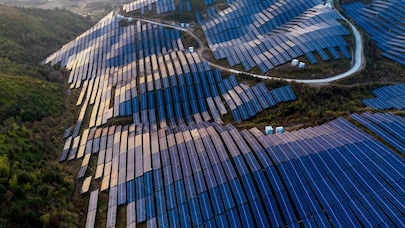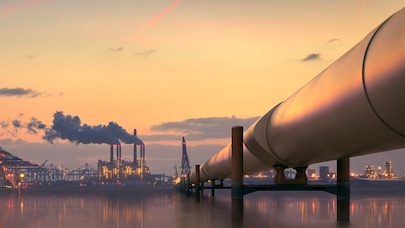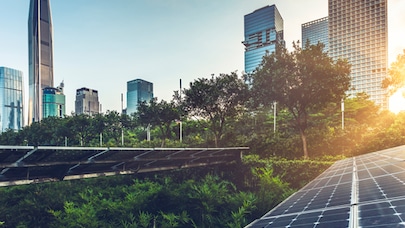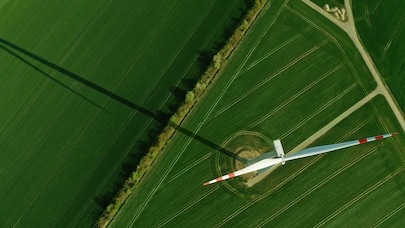Sustainability

How can you drive energy and cost efficiencies, without sacrificing performance?
With AI-enabled networks that are as sustainable as they are smart
As AI and machine learning become more prevalent across business operations, the same technology must be applied to networks to enhance sustainability by reusing and recycling their own infrastructure.
Sustainability is a growing concern for network operators and large IT network teams. The recent record-breaking heat waves have highlighted the necessity of tackling climate change, and sustainable networks are necessary to reduce energy consumption and carbon emissions. Data and network traffic are rising due to spatial computing, AI, and machine learning, as well as digital transformation. But these technologies are equally crucial for sustainability. AI-powered predictive analytics can automatically alter network power based on traffic trends. AI-self-regulating networks can identify network anomalies and lower output by adjusting power. AI-based energy management will cut expenses and network energy use. Future network operations may become completely autonomous as a result of AI-powered networks.
Network operators, like other responsible industries, will embrace circularity by increasing the refurbishment, remanufacturing and recycling of equipment to minimize the industry's environmental impact from mining virgin materials. Embracing the circular economy for network equipment relies on new flows of information and value as well as robust design-for-circularity practices.
Companies using autonomous and remote-controlled operations 74% said sustainability is a key benefit, according to the EY and Nokia's 'Metaverse at work' study.
According to the World Economic Forum Global Risks Report 2023, six of the top ten global risks over the next decade are environmental, encompassing climate change mitigation, change-adoption and resulting crises.
Recent EY and Nokia research shows that 51% of industrial and enterprise metaverse users rank sustainability as the top benefit.
Service providers
Get the insights
Service providers have a critical role in the race to net zero emissions due to their omnipresence in the world's operations, which positions them to directly address the challenges of climate change.
Service provider networks play an important role in modernizing and improving high-impact industries such as energy generation, manufacturing, transport, and agriculture. The "carbon handprint" or "enabling effect" of service providers can reduce high-impact industries' "carbon footprint".
Service providers generate emissions from purchasing energy and heat, and emissions are caused by downstream and upstream activities, such as the energy consumption of suppliers. This is by far the biggest impact area, typically making up more than two-thirds of a service provider's total carbon emissions and sometimes more than 90%.
Service providers have begun to acknowledge that they should assume responsibility for their emissions, for example by demanding transparency into their suppliers' footprints, engaging with them to improve, and factoring this into the selection process.
Sustainability initiatives applied in circular systems can employ re-use, sharing, repair, refurbishment, re-manufacturing, and recycling to create a closed-loop system to minimize resource inputs and reduce waste, pollution, and carbon emissions.
Priorities
- Develop your long-term strategy that will increase the energy efficiency of your services in a consistent manner.
- Provide connectivity and digital solutions that sustainably transform enterprises and industries. Including enabling the digital transformation of the energy sector.
- Obtain sufficient renewable energy to meet the demands of the business while simultaneously reducing the amount of energy consumed.
- Implement the utmost energy-efficient and environmentally friendly technology and solutions in your network infrastructure.
- Embed AI capabilities into your infrastructure to intelligently monitor and manage energy consumption and effectively reducing your carbon footprint.
- Strive to be a frontrunner in energy efficiency through your own operational practices and actions.
- Monitor and report on energy metrics using information that is current and accurate.
Enterprises
What's next?
Nokia is embracing these principles in our business. We are adapting within the ever-changing technology environment continuously innovating our products, services and practices. We are helping companies address constantly evolving technology and sustainability challenges. We were pleased to be ranked in the Clean200 list of global companies leading the way on sustainability by placing it at the heart of their products, services and business models.
For example, our mobile networks will reduce 5G mMIMO base station power consumption by 50% in 2023 from 2019. Modernizing radio networks in 2022 saved 44% energy. 150 network infrastructure customers use our Quillion-based fixed broadband chipset, which uses half the power of previous generations. Over 100 customers use our 50%-power-efficient coherent optical solution PSE-V. New FP5 routing silicon reduces power consumption by 75% per bit for over 30 customers. Our sixth-generation Photonic Service Engine (PSE-6s) for optical networking increases capacity and reduces power consumption by 60%.
Nokia products and services that boost performance and save power. We'll help you understand what is needed to evolve your IT, operations, and network infrastructure to fully leverage the opportunities presented in ESG to transform to a sustainable future.










